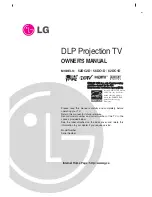
3.3 Commissioning
513
7SD5 Manual
C53000-G1176-C169-1
3.3.13 Checking the Signal Transmission for Breaker Failure Protection and/or Stub
Fault Protection
If the transfer trip command for breaker failure protection or stub fault protection is to
be transmitted to the remote end, this transmission must also be checked.
To check the transmission the breaker failure protection function is initiated by a test
current (secondary) with the circuit breaker in the open position. Make sure that the
correct circuit breaker reaction takes place at the remote end.
Each transmission path must be checked on lines with more than two ends.
3.3.14 Checking the Signal Transmission for Internal and External Remote Tripping
The 7SD5 provides the possibility to transmit a remote trip signal to the opposite line
end if a signal transmission path is available for this purpose. This remote trip signal
may be derived from both an internally generated trip signal as well as from any signal
coming from an external protection or control device.
If an internal signal is used, the initiation of the transmitter must be checked. If the
signal transmission path is the same and has already been checked as part of the pre-
vious sections, it need not be checked again here. Otherwise the initiating event is
simulated and the response of the circuit breaker at the opposite line end is verified.
In the case of the distance protection, the permissive underreach scheme may be
used to trip the remote line end. The procedure is then the same as was the case for
permissive underreach (under „Checking with Permissive Underreach Transfer Trip“);
however the received signal causes a direct trip.
For the remote transmission, the external command input is employed on the receiv-
ing line end; it is therefore a prerequisite that:
DTT Direct Trip
is set in address
122
Enabled
and
FCT Direct Trip
is set in address
2201
ON
. If the signal trans-
mission path is the same and has already been checked as part of the previous sec-
tions, it need not be checked again here. A function check is sufficient, whereby the
externally derived command is executed. For this purpose the external tripping event
is simulated and the response of the circuit breaker at the opposite line end is verified.
3.3.15 Testing User-Defined Functions
The device has a vast capability for allowing functions to be defined by the user, es-
pecially with the CFC logic. Any special function or logic added to the device must be
checked.
Naturally, general test procedures cannot be given. Configuration of these functions
and the set value conditions must be actually known beforehand and tested. In partic-
ular any interlocking conditions of the switch resources (power switches, breakers,
earth switches) must be observed and tested.
www
. ElectricalPartManuals
. com
















































